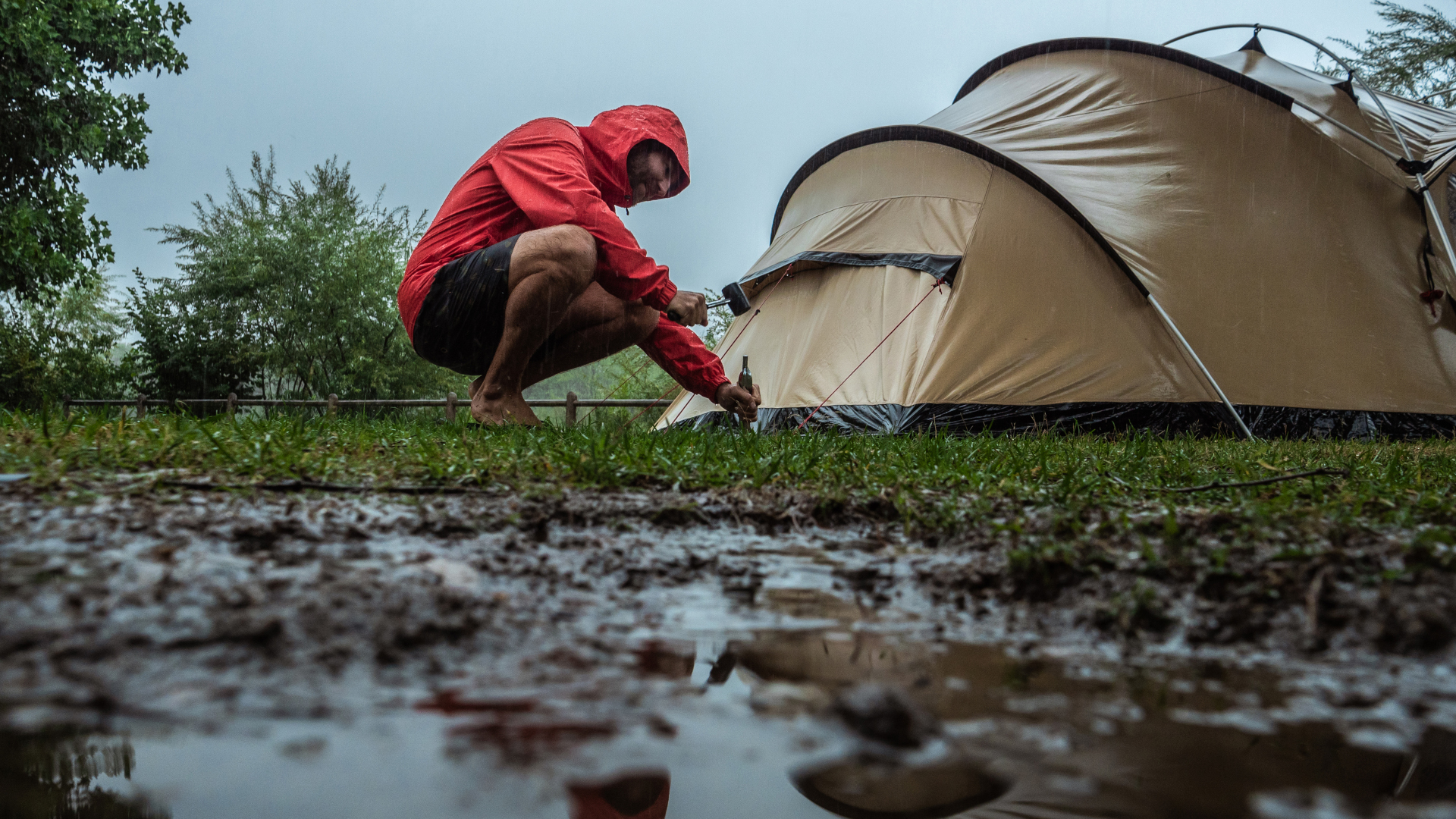
If you like taking a hike with your tent and sleeping bag in tow, there’s a good chance you’ll come up against some rain at some point. Whether you’re backpacking through the lush rainforest of Olympic National Park or just encountering a passing afternoon rain shower in Colorado, it’s difficult to dodge moisture entirely when you’re out on the trail for prolonged periods.
If you’re unprepared and get soaked through, this can definitely put a literal damper on your adventure, but rain in the forecast doesn’t mean you can’t still go backpacking. Knowing how to go backpacking in the rain is simply another outdoor skill – like knowing how to use a compass and calling for help – and mastering it won’t change the weather, but it can make your travels more fun.
1. Dress to stay dry
On pretty much any backpacking trip or hike, it’s a good idea to assume you’ll encounter some rain and dress accordingly. In addition to wearing quick drying hiking layers, always carry a waterproof jacket and rain pants. If you think you’ll be experiencing really wet weather, consider waterproof hiking boots and even gaiters to keep your feet dry when crossing streams and bogs.
You’ll also want to bring a spare set of dry clothes – hiking socks, hiking pants, base layer – packed inside a dry bag inside your backpack that you can change into if you get drenched.
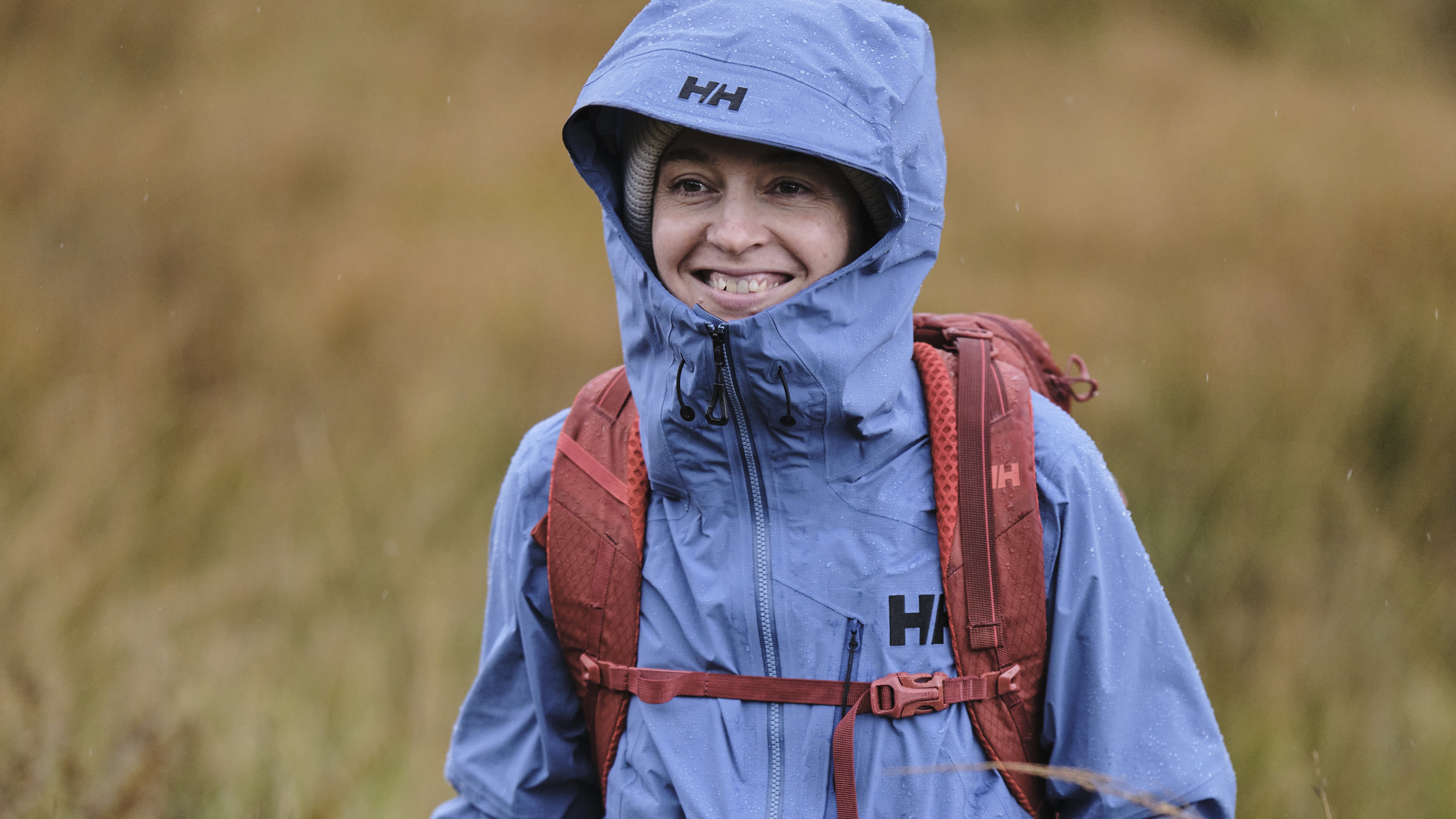
2. Pack properly
Opening your backpack as little as possible when it’s raining is really helpful, so when you’re packing your backpack, make sure anything you’re likely to need on the trail is easy to reach. Think: map and compass, lunch, water bottle, hiking gloves and first aid kit in the lid compartment so you don’t have to root around for ages.
3. Protect your pack
Your hiking backpack holds your home for the night, or possibly several nights, and you want to avoid a soggy sleeping bag and spare clothes at all costs. Though your pack is probably treated with DWR and will hold off a light rain, it won't be completely waterproof if you’re anticipating sustained or heavy rain.
Annoyingly, most backpacks don’t come with a built-in rain cover (though the Berghaus Trailhead 65 does) so you’re going to need to purchase a separate rain cover that fits your pack, or learn how to waterproof your backpack. As soon as the skies start to look grey, cover up your backpack and keep your gear dry.
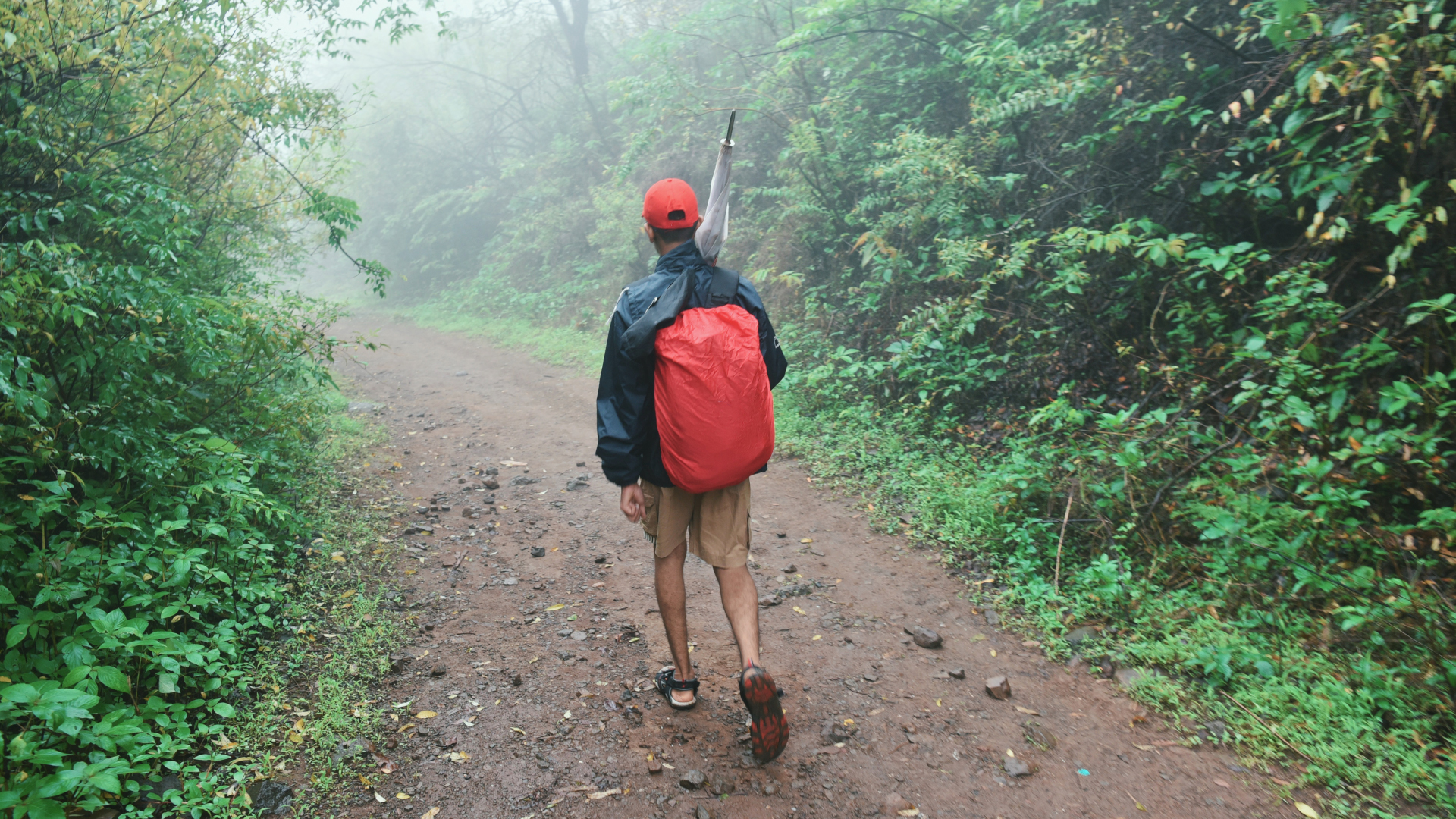
4. Watch for wet weather hazards
While you’re walking, you’ll want to take extra care on the trail as rain can make the conditions extra challenging. You might encounter sloppy, muddy slopes or even find yourself crossing streams that aren’t usually there and can dislodge rocks and other debris, while rock surfaces can become extra slick when wet.
Ensure your hiking boots have soles with really good traction such as Vibram soles with deep lugs. When you’re crossing slick or sloppy areas, consider using your trekking poles to keep your balance and read up on how to cross a river safely.
5. Choose a safe campsite
If you’re in a prolonged downpour, pitching a tent isn’t going to be a huge amount of fun, but you don’t want to make matters any worse. Seek sheltered spots and look for higher ground rather than camping down low in areas that might flood. Keep away from rivers that can break their banks and avoid dead trees which might fall. If it’s also windy, position your tent so that your doors face away from the wind.
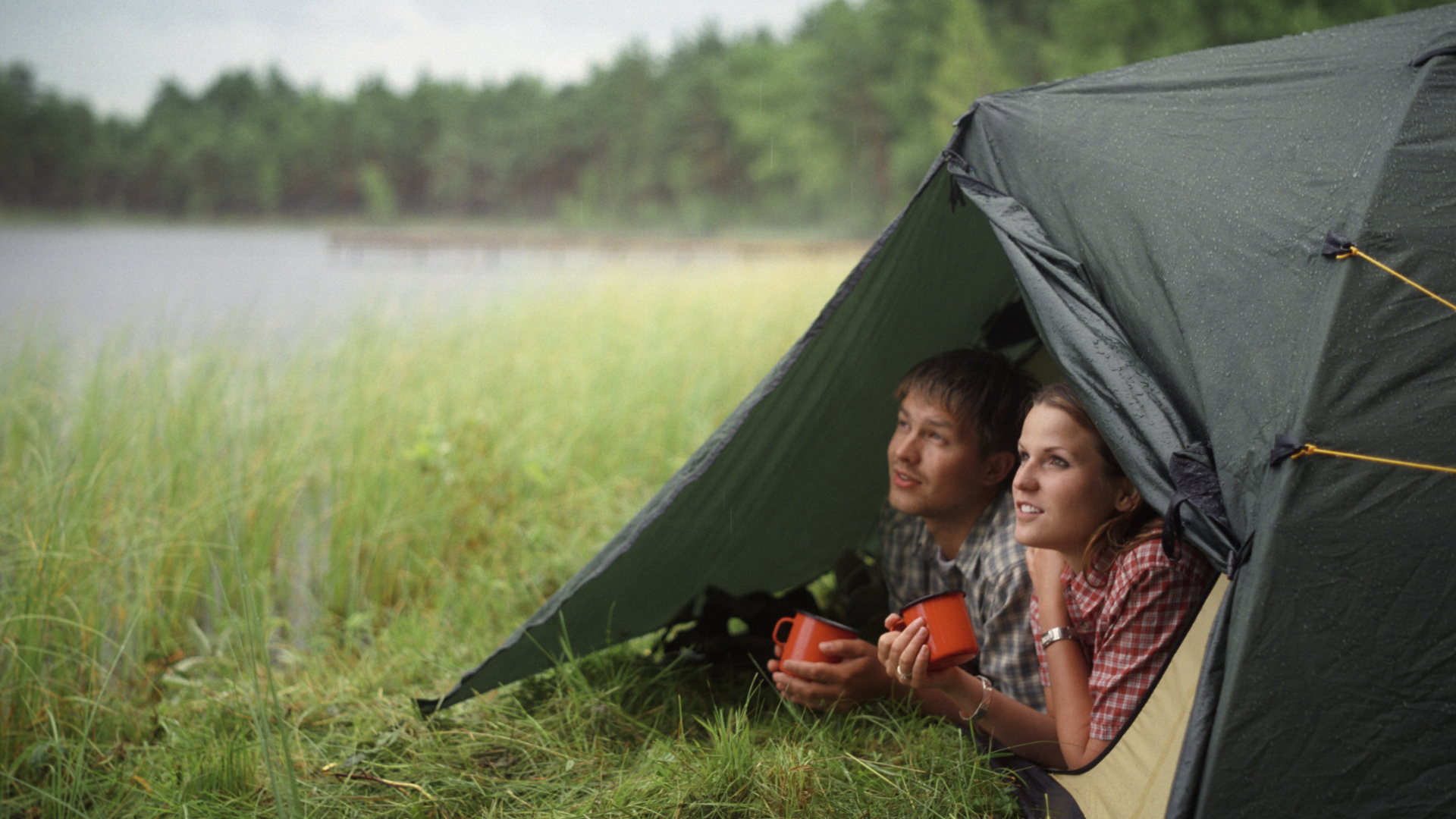
6. Pitch like a pro
It adds extra weight to your pack, but a camping tarp can go a long way in conditions like this and you can set it up first then pitch your tent underneath it. Some tents, like my MSY Hubba Hubba NX, are designed so that you can pitch the rainfly first, then pitch the inner and these are ideal for rainy days.
Without these options, your best bet is to simply pop up your tent as quickly as possible, so make sure it’s not your first go around. Use tent footprint for more protection against waterlogged ground, and open any vents to help prevent condensation build up.
7. Dry out
Drying out on the trail isn’t easy, but once your tent is up, get your wet clothes off and your dry clothes on, then if and when the sun comes out, you can spread out any wet gear to dry. You can sleep with wet socks inside your sleeping bag to dry them out faster, or hang them off your backpack while you hike, assuming it’s stopped raining.
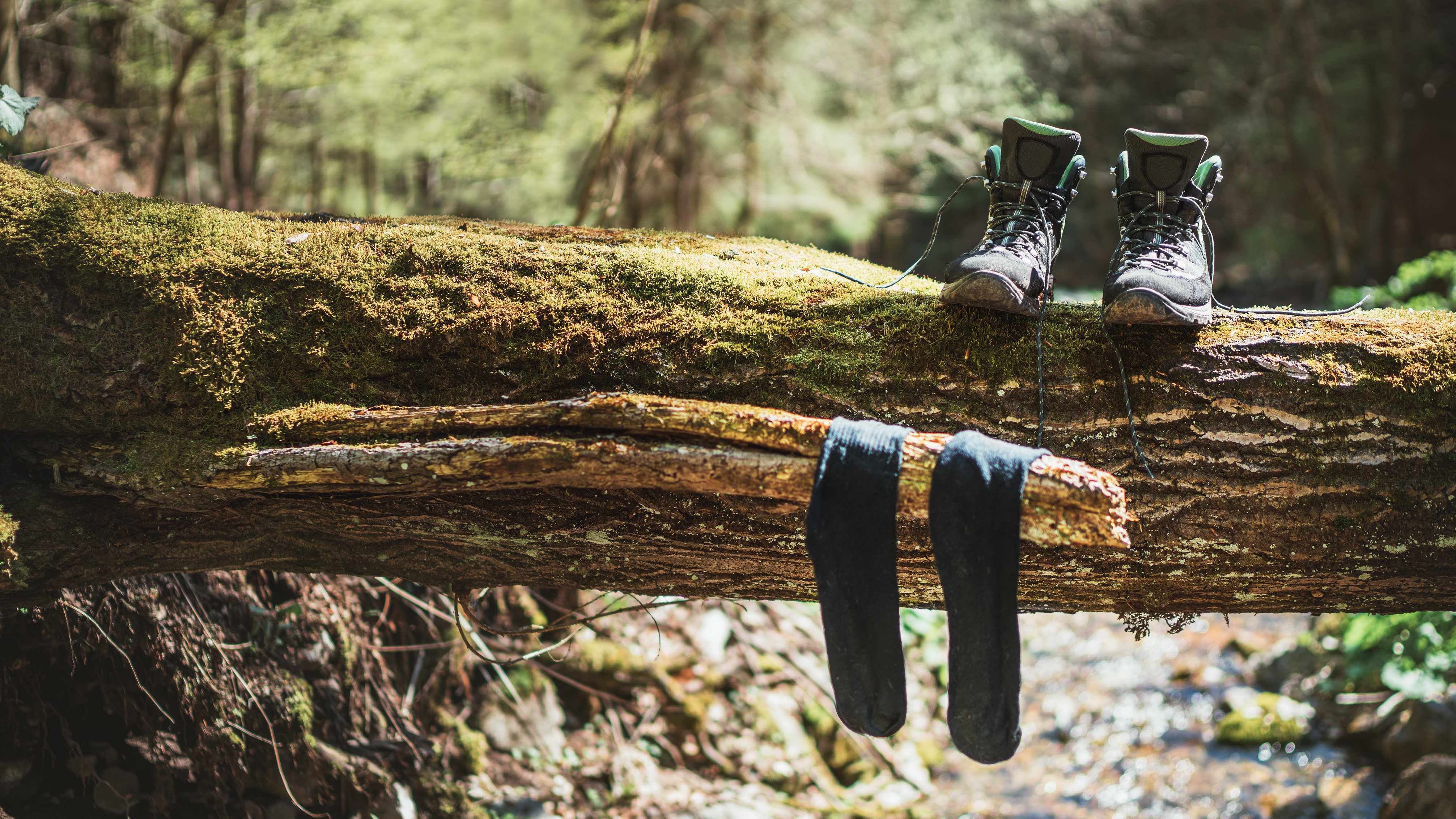
8. Stay positive
Finally, though backpacking in the rain can dampen your spirits if you let it, try to stay positive. Any time in the wild is time worth spent and rainy landscapes can be beautiful. Make sure you have provisions to make a tasty hot brew like hot chocolate over your camping stove, and bring cards or reading material in case you’re ensconced in your tent for a long time.







